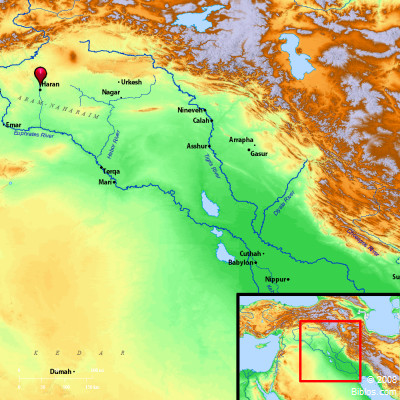Atlas  Paddan (Haran) and surrounding region Maps Created using Biblemapper 3.0 Additional data from OpenBible.info You are free to use up to 50 Biblos coprighted maps (small or large) for your website or presentation. Please credit Biblos.com. Occurrences Genesis 48:7 As for me, when I came from Paddan, Rachel died by me in the land of Canaan in the way, when there was still some distance to come to Ephrath, and I buried her there in the way to Ephrath (the same is Bethlehem)."Encyclopedia PADDAN-ARAMpad'-an-a'-ram or p.-ar'-am (paddan 'aram; Septuagint Mesopotamia tes Surias; the King James Version Padan-aram): In Genesis 48:7, Paddan stands alone, but as the Septuagint, Sam, and Peshitta read "Aram" also, it must in this verse have dropped out of the Massoretic Text. In the time of Abraham, padanu occurs on the Babylonian contract-tablets as a land measure, to which we may compare the Arabic feddan or "ox-gang." In the Assyrian syllabaries it is the equivalent of iklu, "a field," so that Paddan-aram would mean "the field of Aram," and with this we may compare Hosea 12:12 (Hebrew 12:13) and the use of the Hebrew sadheh in connection with Moab and Edom (Judges 5:4 Ruth 1:6). |



